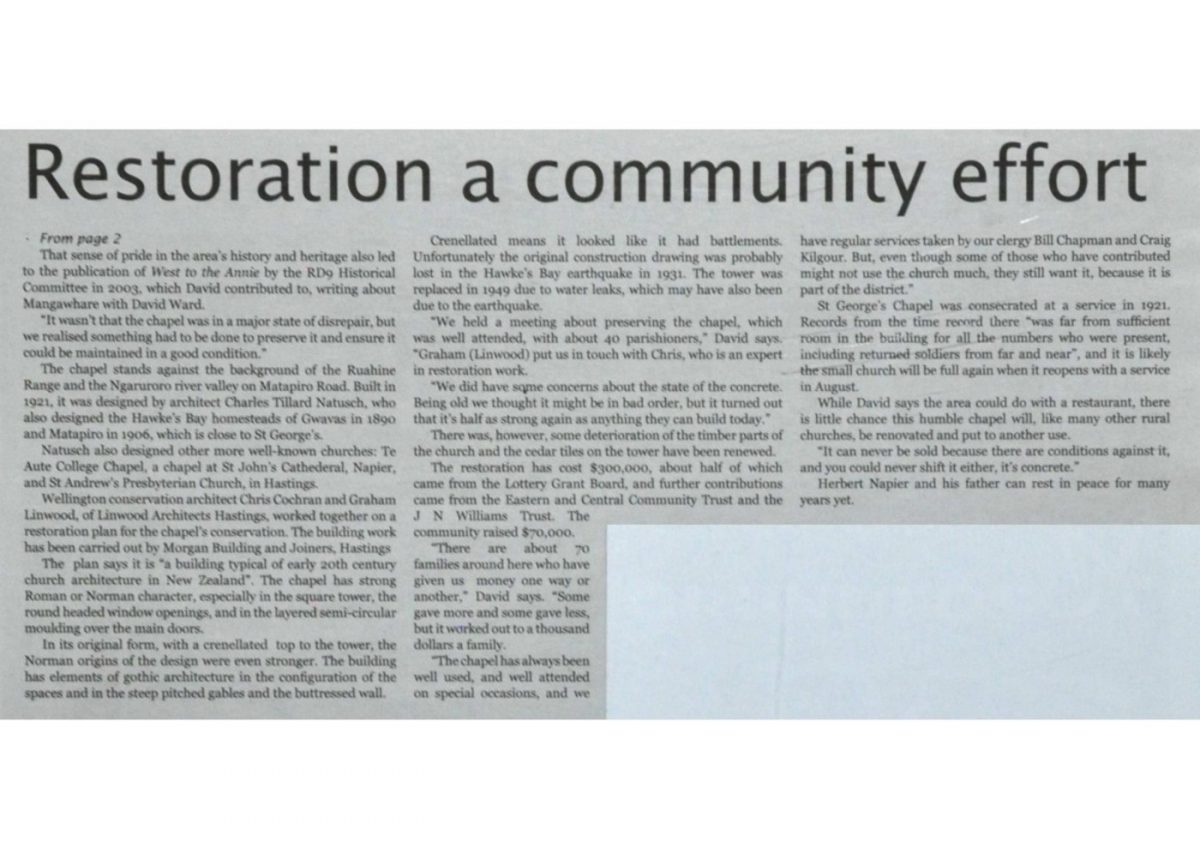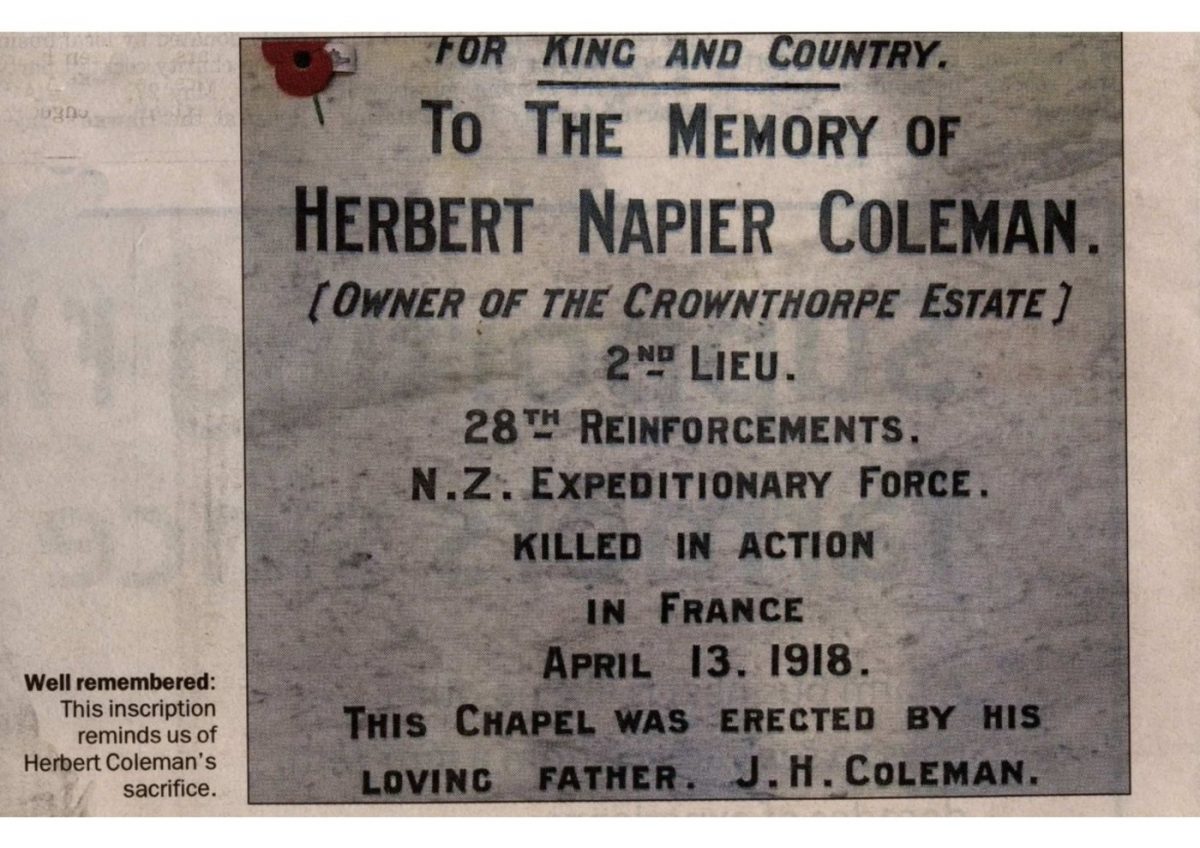Restoration a community effort
From page 2
That sense of pride in the area’s history and heritage also led to the publication of West to the Annie by the RD9 Historical Committee in 2003, which David contributed to, writing about Mangawhare with David Ward.
“It wasn’t that the chapel was in a major state of disrepair, but we realised something had to be done to preserve it and ensure it could be maintained in a good condition.”
The chapel stands against the background of the Ruahine Range and the Ngaruroro river valley on Matapiro Road. Built in 1921, it was designed by architect Charles Tillard [Tilleard] Natusch, who also designed the Hawke’s Bay homesteads of Gwavas in 1890 and Matapiro in 1906, which is close to St George’s.
Natusch also designed other more well-known churches: Te Aute College Chapel, a chapel at St John’s Cathedral, Napier, and St Andrew’s Presbyterian Church, in Hastings.
Wellington conservation architect Chris Cochran and Graham Linwood, of Linwood Architects Hastings, worked together on a restoration plan for the chapel’s conservation. The building work has been carried out by Morgan Building and Joiners, Hastings
The plan says it is “a building of early 20th century church architecture in New Zealand’. The chapel has strong Roman or Norman character, especially in the square tower, the round headed window openings, and in the layered semi-circular moulding over the main doors.
In its original form, with a crenellated top to the tower, the Norman origins of the design were even stronger. The building has elements of gothic architecture in the configuration of the spaces and in the steep pitched gables and the buttressed wall.
Crenellated means it looked like it had battlements. Unfortunately the original construction drawing was probably lost in the Hawke’s Bay earthquake in 1931. The tower was replaced in 1949 due to water leaks, which may have also been due to the earthquake.
“We held a meeting about preserving the chapel, which was well attended, with about 40 parishioners,” David says. “Graham (Linwood) put us in touch with Chris, who is an expert in restoration work.
“We did have some concerns about the state of the concrete. Being old we thought it might be in bad order, but it turned out that it’s half as strong again as anything they can build today.”
There was, however, some deterioration of the timber parts of the church and the cedar tiles on the tower have been renewed.
The restoration has cost $300,000, about half of which came from the Lottery Grant Board, and further contributions came from the Eastern and Central Community Trust and the J N Williams Trust. The community raised $70,000.
There are about 70 families around here who have given us money one way or another,” David says. “Some gave more and some gave less, but it worked out to a thousand dollars a family.
“The chapel has been well used, and well attended on special occasions, and we have regular services taken by our clergy Bill Chapman and Craig Kilgour. But, even though some of those who have contributed might not use the church much, they still want it, because it is part of the district.”
St George’s Chapel was consecrated at a service in 1921. Records from the time record there “was far from sufficient room in the building for all the numbers who were present, including returned soldiers from far and near”, and it is likely the small church will be full again when it reopens with a service in August.
While David says the area could do with a restaurant, there is little chance this humble chapel will, like many other rural churches, be renovated and put to another use.
“It can never be sold because there are conditions against it, and you could never shift it either, it’s concrete.”
Herbert Napier and his father can rest in peace for many years yet.















Do you know something about this record?
Please note we cannot verify the accuracy of any information posted by the community.